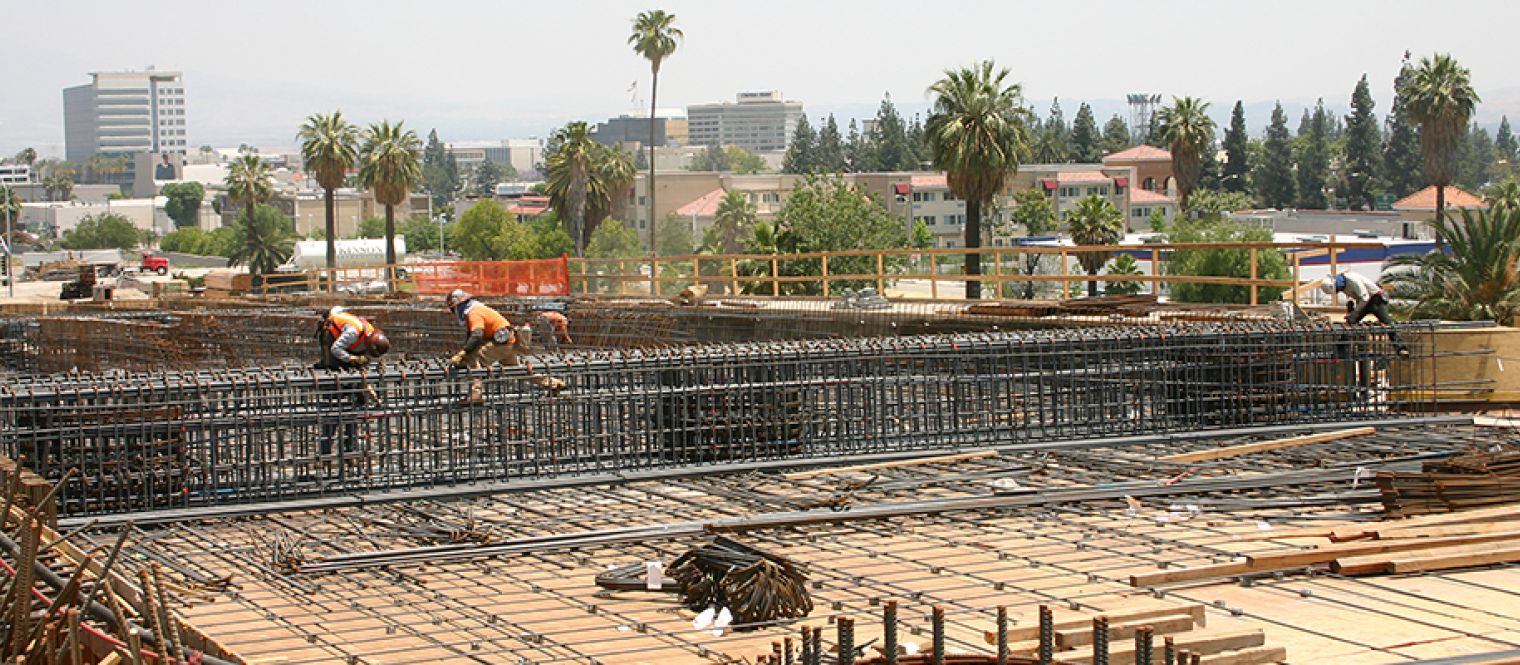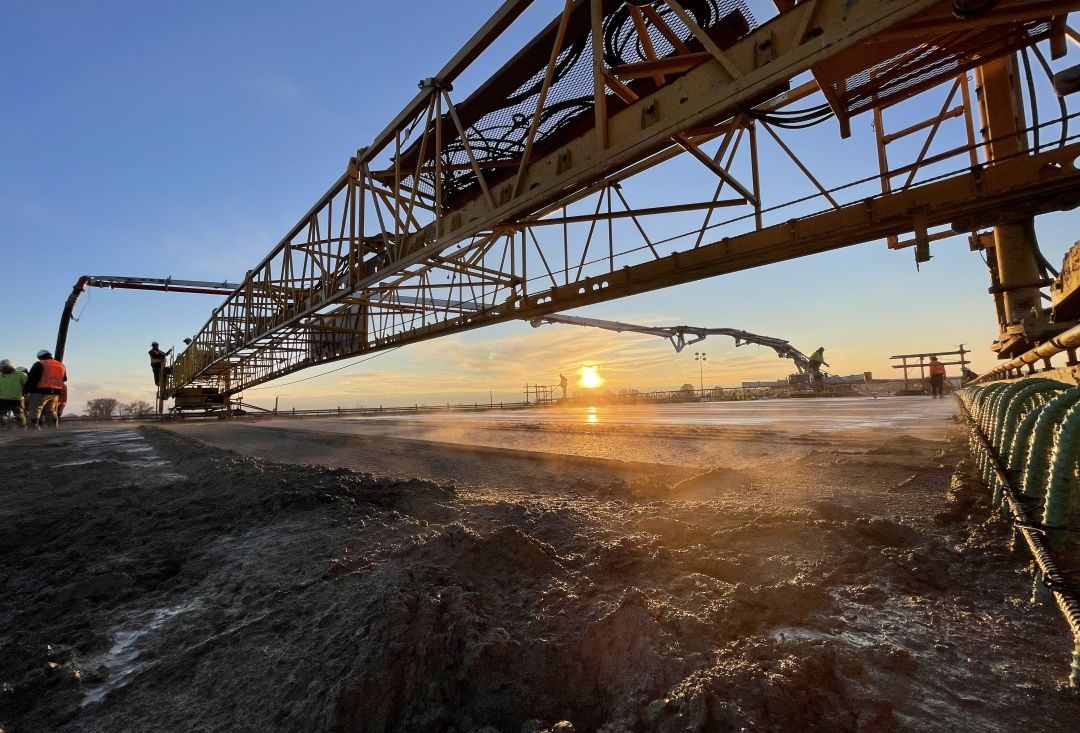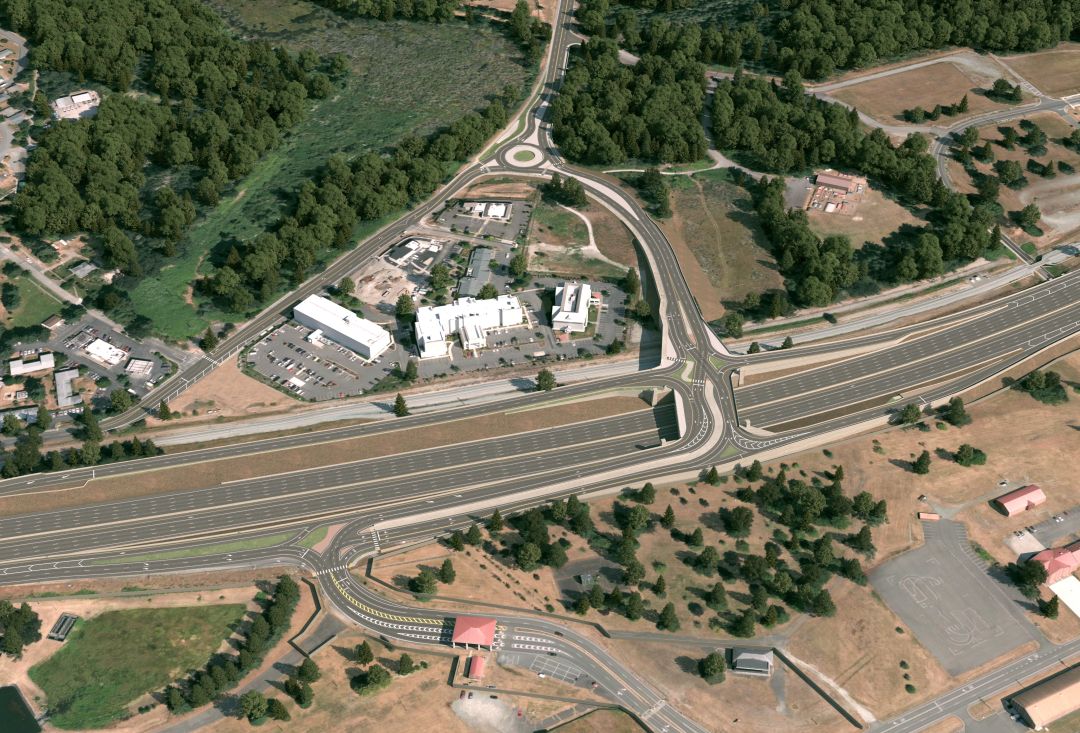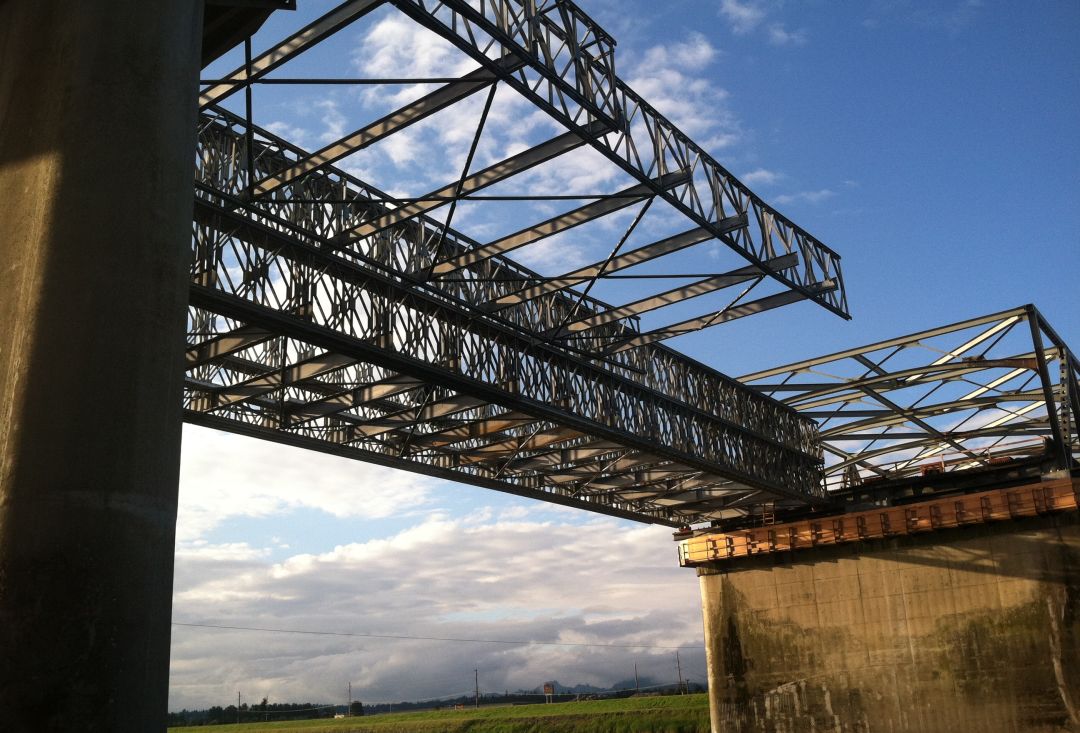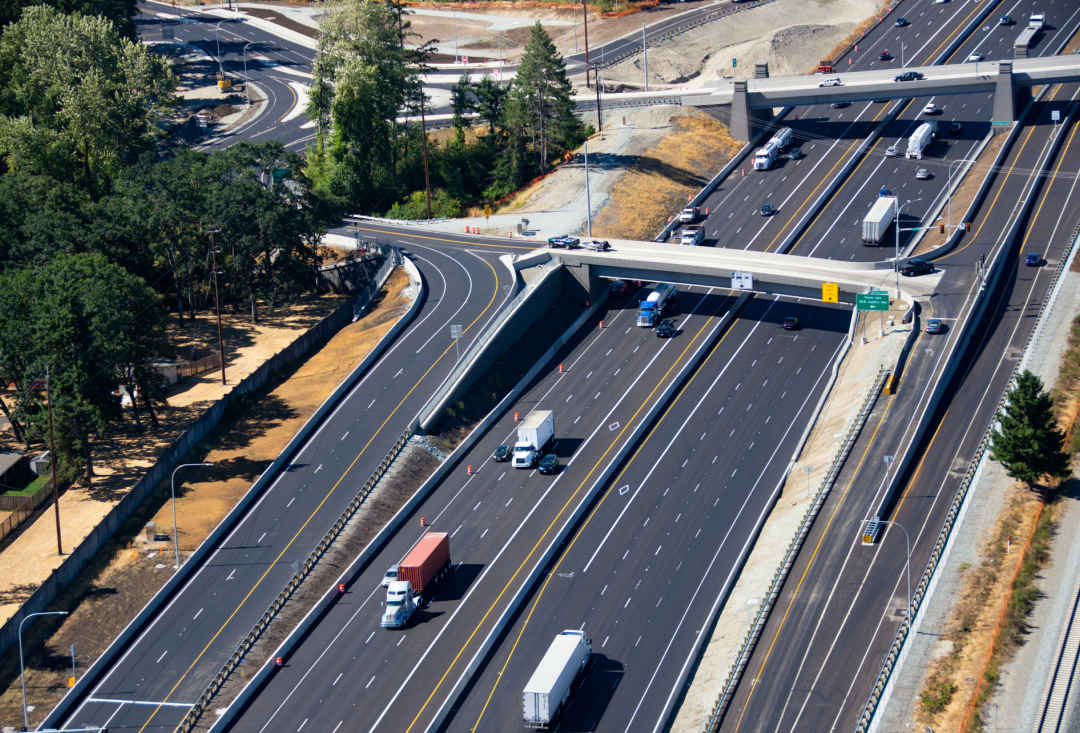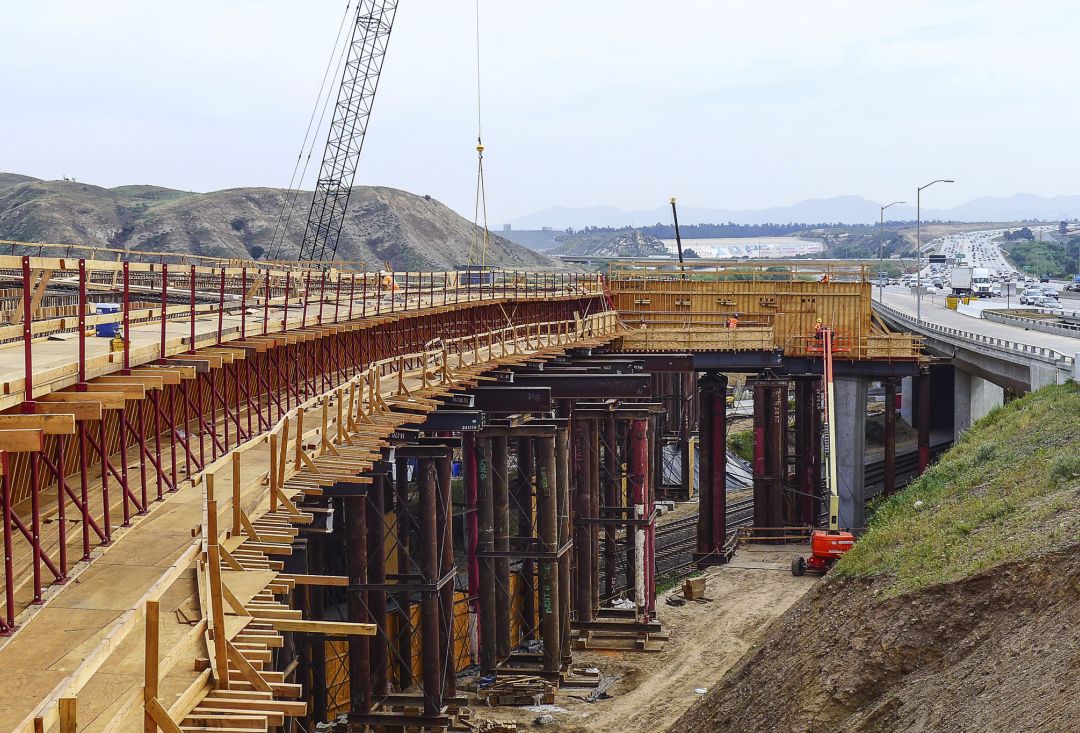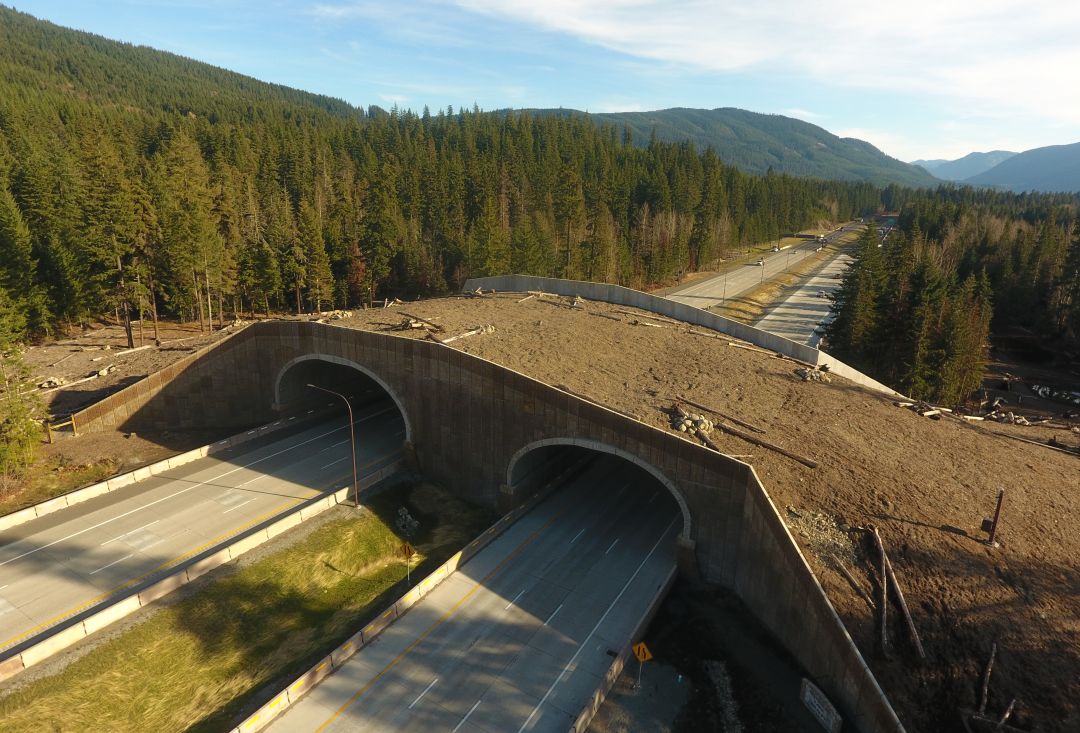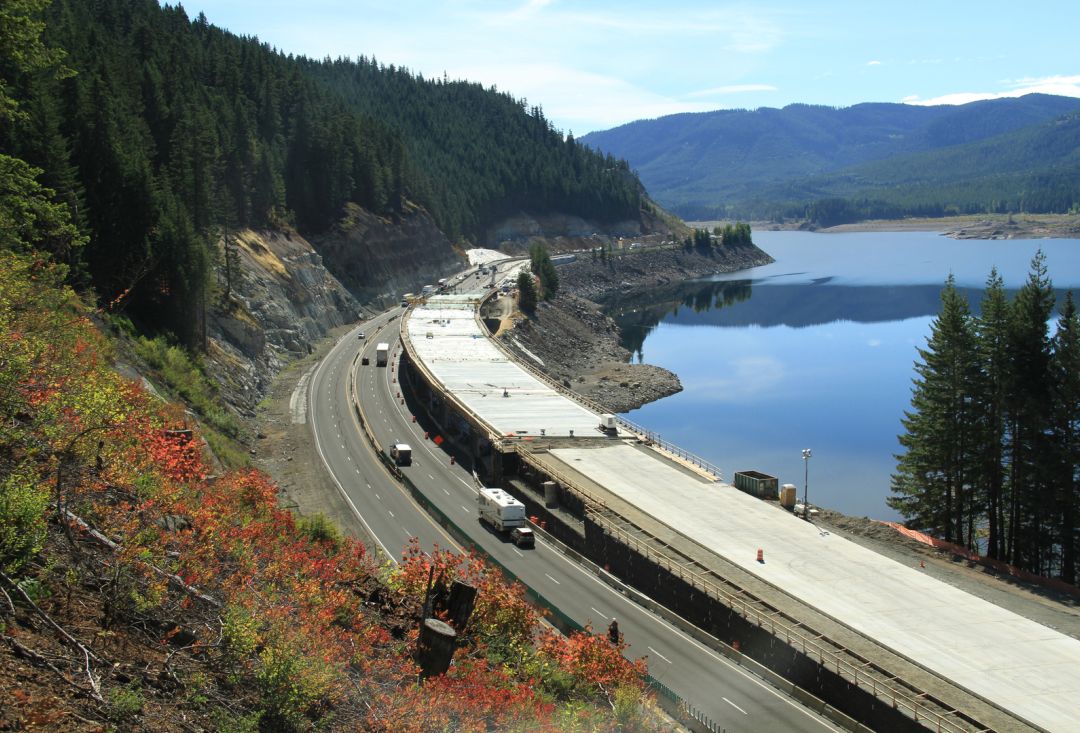Client
Completion Date
Designer
Location
Delivery Method
Division
Contract Value
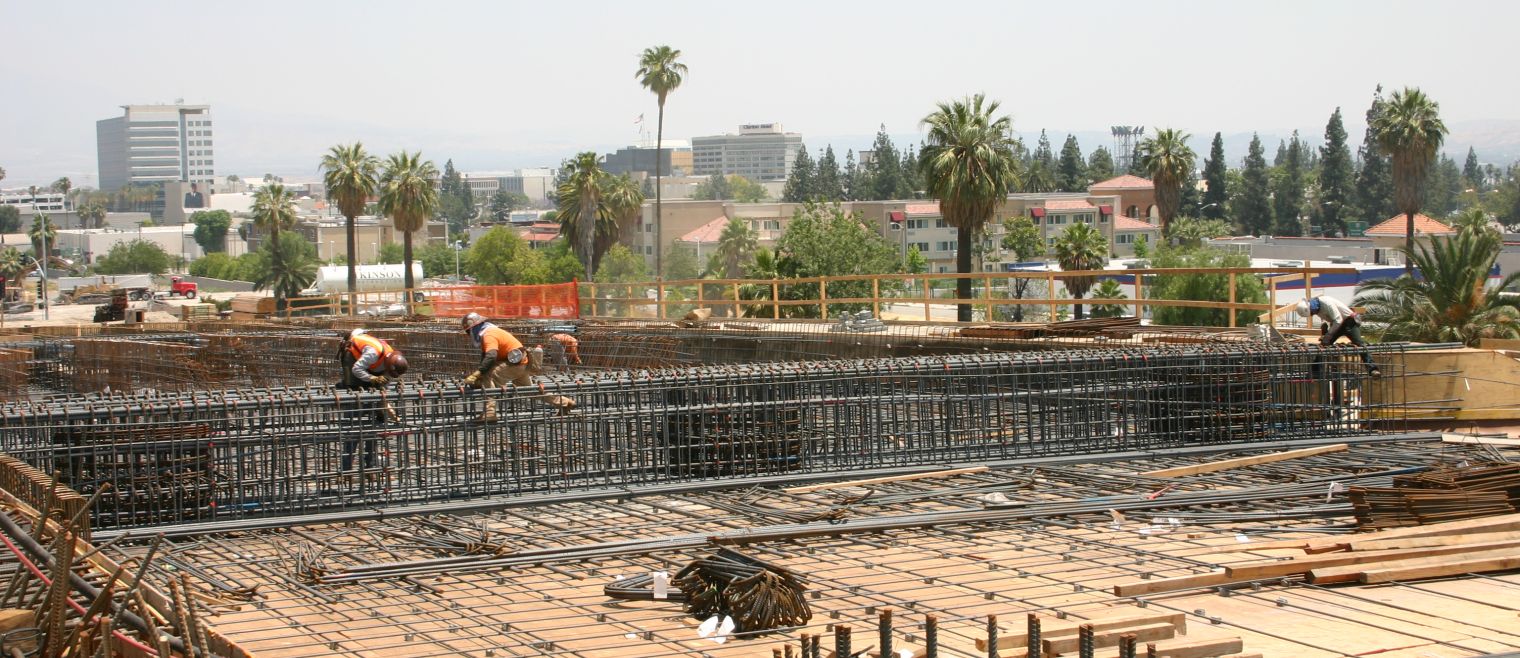
I-215/Fifth Street Overcrossing includes constructing the RT-66/I-215 north half overcrossing structure and approach improvements, demolishing the existing 66/215 S and 66/215 N separation structures, and constructing the RT-66/I-215 S half overcrossing structure and approach improvements. Work also included pile driving, rebar installation, electrical, AC paving, drainage, lighting, fiber optics, and bridge aesthetic improvements—including decorative antique street lighting, custom fencing, and history patterns in the bridge railing.
The first stage of the project included widening and reconstructing the 5th Street overcrossing. This bridge is part of the original Route 66 and required challenging falsework and bridge construction over the highly traveled I-215 and four sets of BNSF railway tracks. The bridge is designed to accommodate the I-215 freeway widening below (from six to 10 lanes) and future improvements by BNSF. Another significant component of the project involved replacing the existing steel girder overcrossing structure with a new five-span, post-tensioned, cast-in-place, concrete box girder bridge supported by concrete footings and steel HP-piles. To ensure the flow of traffic along State Route 66 (Fifth Street) during construction, Atkinson executed the bridge construction in two stages. This phase necessitated extensive coordination with BNSF Railroad, which operates approximately 100 trains along the tracks each day, translating to an average of one train every 15 minutes. Construction activities occasionally required brief stops to train traffic, with exceptions during the fourth quarter of each year when track closures were restricted due to time-sensitive delivery schedules. The project was completed eight months ahead of schedule—resulting in approximately $2 million savings for Caltrans.
